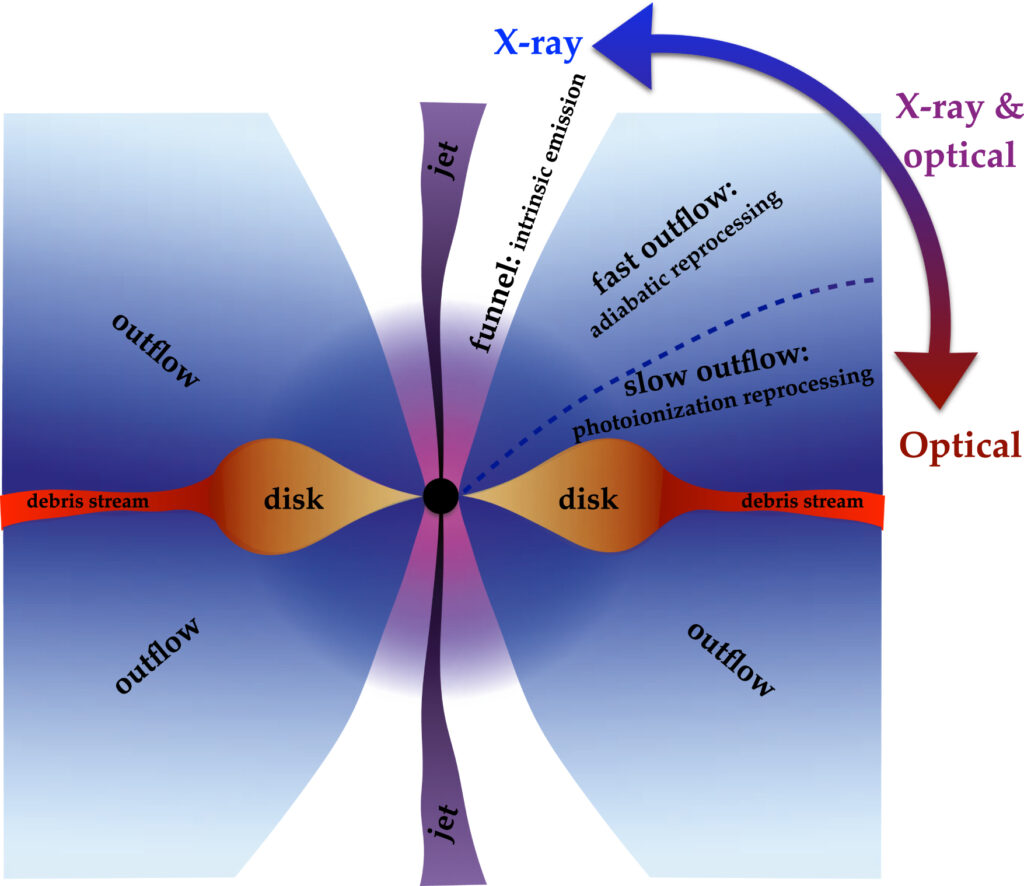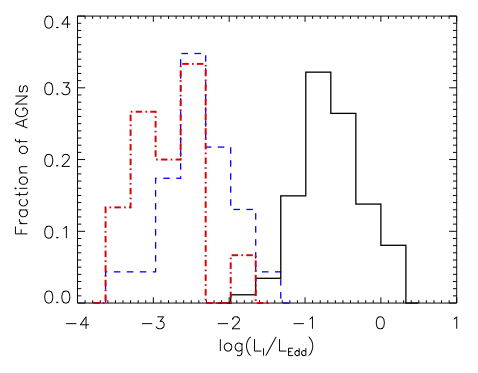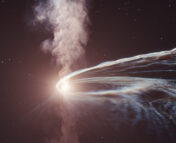Title: Dynamical Unification of Tidal Disruption Events
Authors: Lars L. Thomsen, Tom M. Kwan, Lixin Dai, Samantha C. Wu, Nathaniel Roth, Enrico Ramirez-Ruiz
First Author’s Institution: Department of Physics, University of Hong Kong
Status: Published in ApJ Letters (open access)
Tidal Disruption Events & The Optical/X-ray Dichotomy
Once every 10,000 years or so, an unfortunate star will wander just a little too close to the supermassive black hole at the center of its galaxy and undergo a dreaded tidal disruption event (TDE). A TDE occurs when the tidal forces from the black hole exceed the star’s own self-gravity, causing the star to get ripped apart and become an afternoon snack for the black hole. Some of the star’s material will form a temporary accretion disk around the previously quiet and unobservable black hole. The first TDEs were found with the ROSAT X-ray satellite, which performed the first all-sky survey in the X-rays in the 1990s. ROSAT discovered four TDEs, all of which had very soft X-ray emission (~30-200 eV, i.e. low-energy X-rays) consistent with the formation of an accretion disk — exactly what theorists predicted a decade earlier!
However, things have gotten much more complicated in recent decades. There are now two main classes of TDEs: X-ray TDEs, like those discovered by ROSAT, and optical TDEs, discovered by optical surveys like the Zwicky Transient Facility (ZTF) and All-Sky Automated Survey for Supernovae (ASAS-SN). These two classes of TDEs have very different observed emission properties, which has opened a whole host of questions around the nature of TDEs. In particular, today’s paper focuses on answering one key question: are these two classes of TDEs truly distinct, or can they be explained by one physical phenomenon with different properties?
Learning from the Past: Relating TDEs to AGN

The existence of two apparent types of TDEs could be a visual effect, akin to what we see in active galactic nuclei (AGN), which are the central regions of galaxies whose supermassive black hole is undergoing long-lived accretion. Today AGN are broken into two main classes depending on whether or not their optical spectra show broad emission lines (see example spectra and this Astrobites guide more details on AGN classification). As early as 1985, these differences were known to be due to a difference in viewing angle to the nucleus, rather than an intrinsic difference between the two types of AGN. In Type 2 AGN, the broad lines are blocked by an edge-on view through a torus of dense dust and gas, whereas in Type 1 AGN the face-on viewing angle means the broad lines are clearly visible with a sight line not through the dusty torus. In 2018, Dai et al. put forth a similar idea for TDEs—a unified model for the observed emission in TDEs based on the viewing angle (see Fig. 1). In their model, optical TDEs arise from relatively edge-on systems, where the outer disk reprocesses X-ray emission from the inner disk by absorbing and scattering X-ray photons down to optical energies. This means that optical TDEs still emit X-rays, but we can’t see them given our orientation relative to the event. On the other hand, X-ray TDEs are expected to come from face-on systems, where we have a direct sight line to the inner disk (where most of the X-ray emission is produced).
A New Take on Unification: Combining Viewing Angle and Accretion Rate
Today’s paper takes this new unified TDE model a step further, finding that viewing angle is not the only effect determining the observed properties of TDEs. The authors find that the accretion rate (how quickly the black hole is gobbling down its afternoon snack) also plays an important role in the observed properties of TDEs. The accretion rate serves as a proxy for the time since the beginning of the TDE, as the accretion rate is expected to drop as time goes on. Therefore, measuring the effect of accretion rate also allows us to learn about how TDE emission properties evolve with time. To investigate these effects, the authors run state-of-the-art 3D general relativistic magnetohydrodynamic (GRMHD) simulations of accretion flows in TDEs, which include both Einstein’s theory of General Relativity and the effects of magnetic fields.
At the extremes of the viewing angles, these simulations align perfectly with what Dai et al. (2018) found—the viewing angle alone can explain the optical/X-ray dichotomy in TDEs. At face-on viewing angles, the observed emission is always X-ray dominated, while at edge-on viewing angles, the observed emission is always optically dominated (see top left/bottom right of Fig. 2, respectively). However, there is a strong accretion rate dependence at the intermediate viewing angles. In systems with viewing angles between 30°-50°, the amount of X-ray emission increases with time and decreasing accretion rate, due to a decreasing amount of material in the outer disk to reprocess the X-rays. Thus, the authors posit that TDEs which show both X-ray and optical emission (particularly optical TDEs with delayed X-ray emission), can be produced at intermediate viewing angles. This simple combination of changes to accretion rate and to viewing angle can explain the vastly different observed properties of TDEs, unifying them into one phenomenon—just like AGN.

Additionally, after exploring the X-ray/optical dichotomy, the authors compare the output of their simulations to the observed properties of TDEs. The simulations can explain the luminosity, temperature, and size evolution of the optical emission in TDEs. Likewise, the authors show that the overall luminosity of optical TDEs is underestimated when not accounting for emission in the far ultraviolet (which no telescope can currently observe). This can explain why some optical TDEs appear to have lower luminosity than expected, which has also been studied in the paper described in this Astrobite.
Looking to the Future: What is Next for TDE Simulations?
This work can explain the emission properties of TDEs at both X-ray and optical wavelengths, so you might ask: what more needs to be done? The authors note a few lines of future work they plan to pursue: (1) addressing the emission line properties of TDEs with better resolution of the radiation in their simulations, (2) studying the formation and properties of a relativistic jet from the TDE with different simulation set-ups, and (3) studying the effects of varying black hole mass and spin. Overall, this paper presents an important step forward in our understanding of the observed properties of TDEs.
Astrobite edited by Delaney Dunne and Catherine Manea
Featured image credit: ESO/M. Kornmesser




